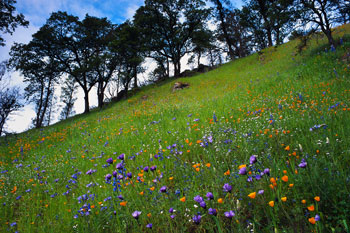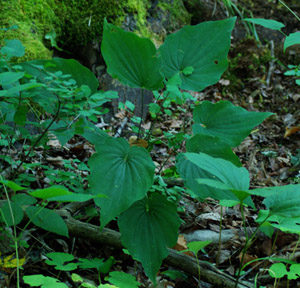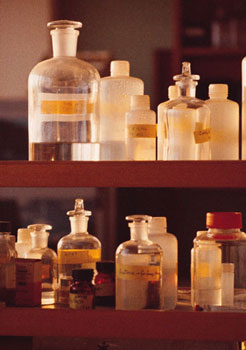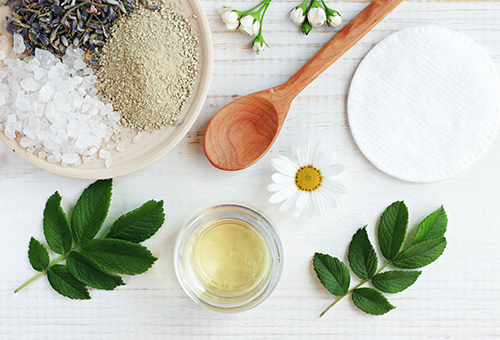Disclaimer: The information on curenaturally.org is intended to improve your knowledge about herbs and their benefits. Articles on this website are not intended to replace medical treatment from your doctor. Always consult your doctor before starting a new treatment regimen.
Page Update 05/17/2019
Edible Wild Medicinal Herbs
By Dr. Ashraf Girgis

Spring is breathtakingly beautiful. It is the rebirth of the planet and the awakening of nature. Suddenly, all the flowers, grass, weeds, and herbs pull their sleepy heads out of the soil and say “hello” to the world. Spring displays the beauty of our planet at its finest.
In Michigan, one can observe this masterpiece with even more intensity. Michigan is blessed with various shrubs, trees, weeds, etc. Unfortunately, instead of enjoying the wild herbs and shrubs of this season, we get rid of them. It is very painful to see how we use hazardous chemicals like roundup to kill these wonderful gifts of nature.
I would like you to get to know a few of these beautiful herbs that grow on the side of the road, and learn how beneficial they are for your health. Next time you go for a walk, you can look for them, identify them, and appreciate them or harvest and use them for tea/salad. Or, rather than killing them, allow the nature to exist as it is.
|
|
|
Dandelion (Taraxacum officinale)
Dandelion is a beautiful, nutrient rich flower that contains more nutrients than many vegetables. Unfortunately, we call it a stubborn weed rather than one of nature’s wonderful gifts. It is capable of curing many ailments. Dandelion roots, like chicory, can be used as coffee substitutes. Its leaves can be used for salad or placed in our sandwiches or soup. It is better to eat the leaves when they are young. You can actually cut them and let them grow back. Its white sap has medicinal effects as well.
There are hundreds of different types of dandelion species growing all over the world. Dandelion has a long history of use as a food in many countries. The young leaves are less bitter, and its flowers are eaten raw in salads. Its leaves are also cooked or boiled as a potherb, and its flowers often dipped in batter and fried. Dried dandelion roots are used as a coffee substitute. Herbal wine is made from fermented dandelion flowers, and seems to be very flavorful and medicinal.
|
 |
|
|
|
|
Common Names:
Dandelion comes from the French name Dent de leon, or “Lions Tooth” because of the shape of its leaves. Another name of it in French is pissenlit, or “pee the bed,” due to its diuretic effects. In Farsi, it is called gule ghasedack “messenger flower”, due to its ability to spread ). As a kid, we were told to make a wish about a person we love and blow the flowers; our loved one would receive the message of our love. Other names are Cankerwort, Priest’s crown, Puffball, white endive, and wild endive.
|

|
|
|
|
|
Composition
Dandelions are composed of Vitamins A, B complex, C, D, sesquiterpene lactones (class of compound containing a lactone), triterpeniod, sponins, polysaccharides (complex carbohyderates), Insulin (large amount is present in the root), and Potassium. Up to 4% of the leaves is Potassium. Other minerals are Zinc, Ir.on, Selenium, Calcium, and Boron, among others
|

|
|
|
|
|
History
Dandelions and their medicinal uses have been found in textbooks written by Persian scientist A-Razi (900AD). Both Chicory and Dandelions are in the Asteraceae family and have been used in ancient Iran for thousands of years. They have been mentioned in Avesta texts (Zoroastrian text books 500 BC). Dandelions were used for medicinal purposes in both China and Europe.
Medicinal Uses of the Dandelion
Dandelion leaves have diuretic effects comparable to Lasix, and can be used to treat heart failure and high blood pressure in patients without the side effect of lowering potassium (a common side effect of Lasix). Dandelions are an excellent source of potassium. The bitter constituents of dandelion roots have shown to increase bile production, and also have some laxative effects. In Japan, a study was conducted in cancer patients; dandelion extracts were shown to reduce and inhibit the growth of certain cancer cells.
Robert Stickles was an internationally famous architect who went through numerous surgeries 21 years earlier, and yet was told by his doctors that the tumor had spread. He was given less than two years to live as a result of his wide spread malignant melanoma.
|

|
|
|
|
|
In a letter to Jeff Zullo, President of the Society for the Promotion of Dandelions, Stickles wrote: " I went on a search for the answer to my mortal problem, and [discovered] that perhaps it was a nutritional dilemma.... To me, cancer is primarily a liver failure manifestation. [Italians are very concerned about problems of the 'fegato']. [I discovered that] the cancer rate in native Italians is very low among the farming population (paesanos). When they get affluent and move to the city, it’s the same as the rest of civilized man. Paesanos eat dandelions, make brew from the roots, and are healthy, often living to over 100 years."(June 23, 1986). He states that he began eating dandelion salad every day, and his improvement confounded the doctors. When he wrote the letter in 1986, 18 years had passed and there had been no recurrence of the melanoma. Dandelion has exhibited mild analgesic and anti-inflammatory effects in mice (Tito et al 1993). Dandelion has shown to be used for a long time as a liver tonic (Marcia et al 2005). Early studies have shown that the root of dandelion can stimulate the flow of bile. is used for treating heartburn, rheumatic conditions, and eczema. It also helps with detoxification of the body and lowers blood sugar due to its insulin content. However, please ask your doctor before starting to consume dandelions as a regular staple in your diet. An herbal formula of dandelion (known as fu zheng qu xie) has shown to be as effective as gentamycin in many cases.
|

|
|
|
|
|
Side effects
The use of dandelion is not recommended to individuals with obstructed of bile ducts or other gall bladder issues. Otherwise, dandelions are considered very safe overall, even in pregnant women and breastfeeding mothers. People allergic to daisies and ragweed should not use dandelions.
Dosage
If you are taking it as a capsule, follow the prescribed daily dosage. As an infusion of dried herbs, take 4-10g three times daily. For dried root, take 2-8g three times daily. According to British pharmacopoeia, 0.5-2g of the root or 4-8g of root tincture can both be taken three times daily. Fresh root or leaves can be consumed as food at levels of 50 g or greater per day.
Thank you for visiting www.curenaturally.org
Thanks,
Ashraf Girgis,ND
|


|
References:
Dandelion. (n.d.). Retrieved March 09, 2016, from umm.edu/dandelion
www.motherearthliving.com/edible-wild-herbs
Retrieved from imjournal.com (n.d.). Retrieved March 09, 2016, from
Retrieved March 09, 2016, from www.webmd.com/vitamins-supplements
Dandelion. (n.d.). Retrieved March 09, 2016, from umm.edu/dandelion
Side Effects of Chicory Root Extract. (2015). Retrieved March 09, 2016, from www.livestrong.com/side-effects
The Health Benefits of Dandelions. (n.d.). Retrieved March 09, 2016, from www.leaflady.org/health_benefits
Bark Casni va Ghvas Darmani. Retrieved March 09, 2016, from http://khanomgol.ir/?html
Have Any Feedback For Our Article?
Let Us Know Below
|
|
|
Additional Articles

Herbs & Diabetes
By Dr. Ashraf Girgis ND
Read More |

Herbs For Women’s Issues
Read More
|

Herbal Remedies for Natural Pain Relief
Read More |
|
|
|
|